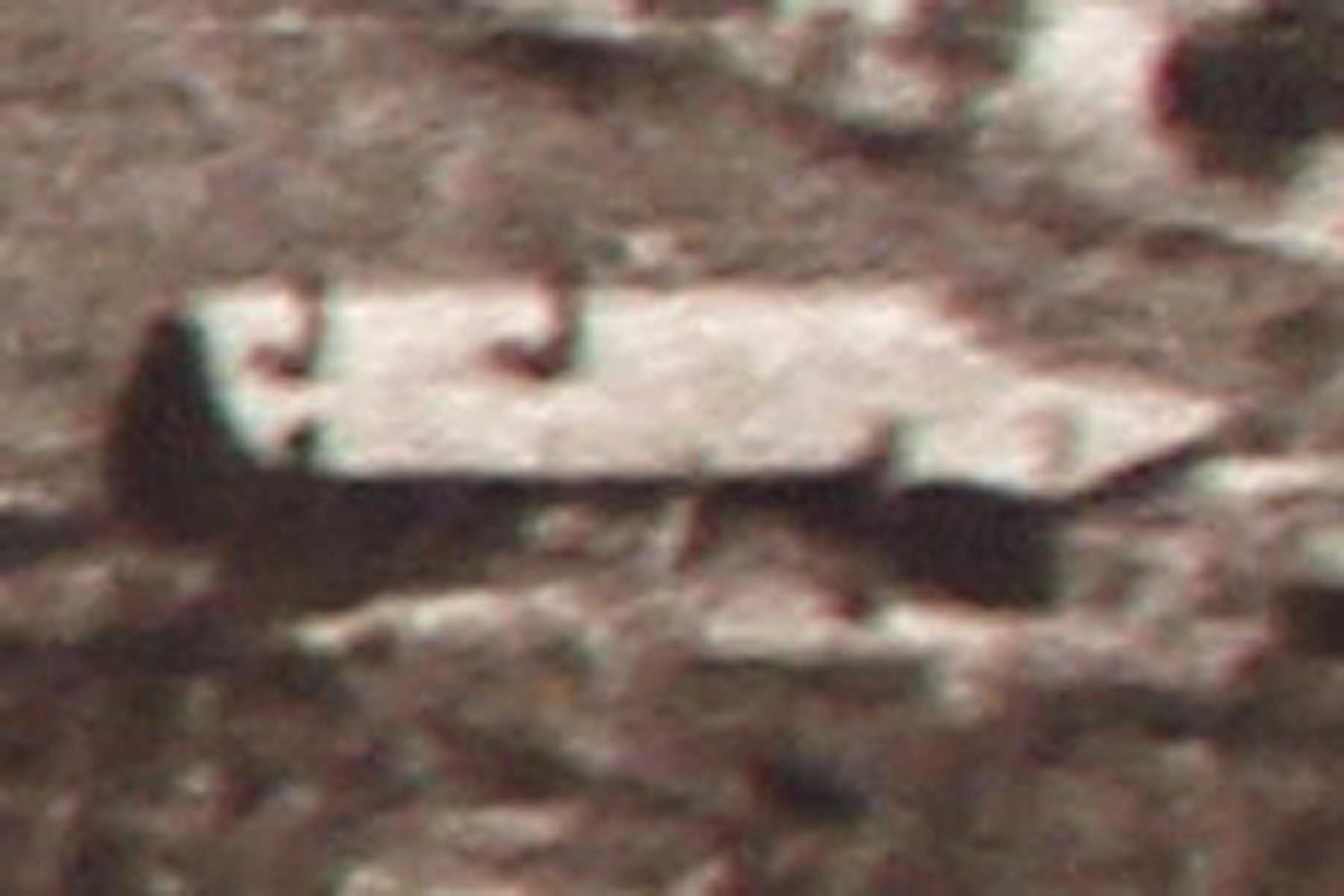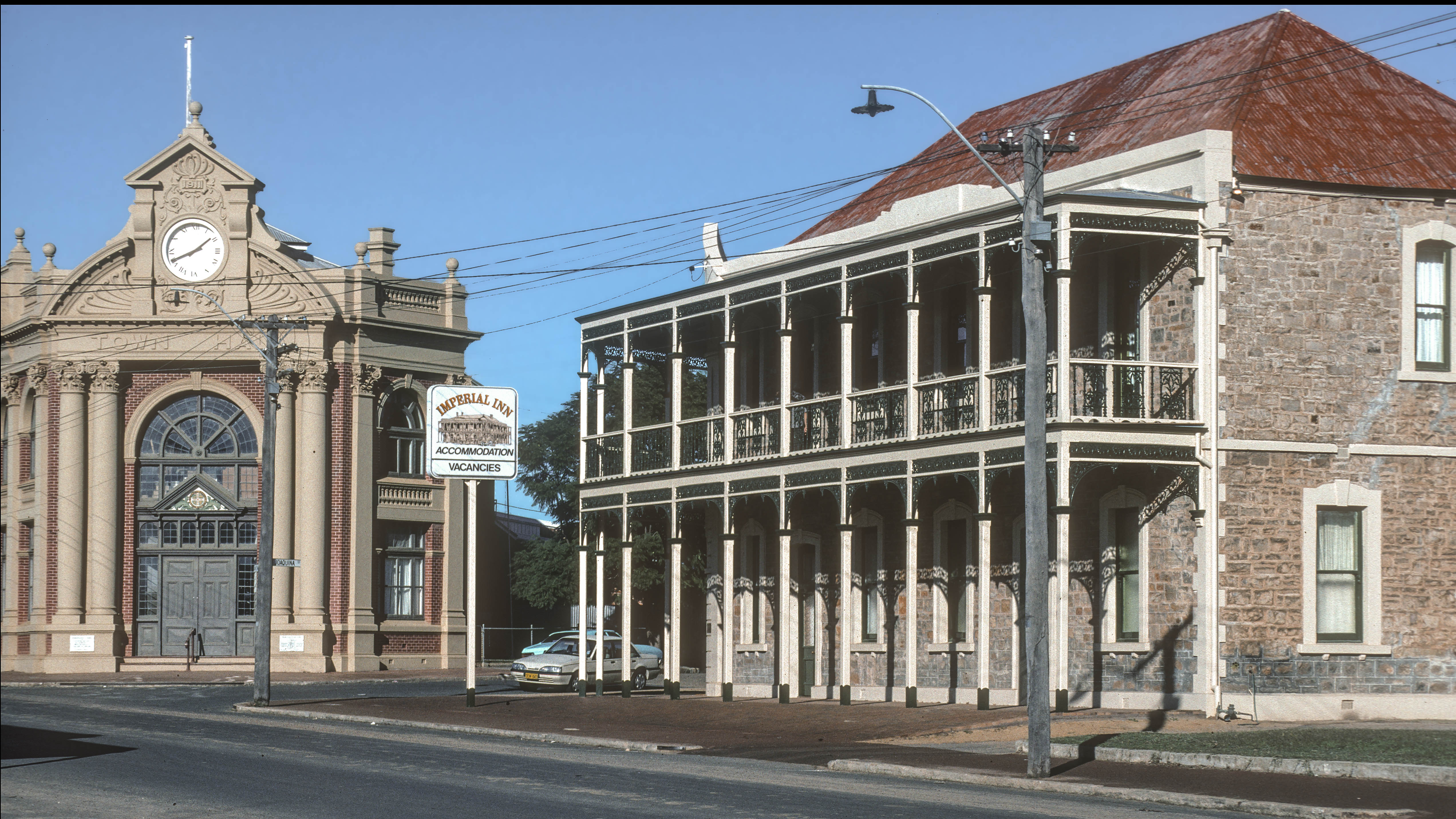|
Masonic Hall, York
The Masonic Hall, York, Western Australia, constructed in 1887, is believed to be the oldest surviving lodge building in Western Australia. It was constructed by the Manchester Unity of Oddfellows in York and was originally called "Oddfellows Hall". The building is in Victorian Academic Classical style. Subdivision In York, in 1885, part of Avon Locations X and Y on the south side of South Street and owned by merchant John Henry Monger Jnr was subdivided. Location Y was traversed by the Eastern Railway line, then under construction, and the York station yard was located within the new subdivision. Already on the land was the Sisters of Mercy convent and school, on South Street, and the York Mechanic's Institute on Avon Terrace (where the Town Hall is now situated). The property was acquired by a syndicate taking advantage of the railway extension, comprising Stephen Parker, James Grave and Maitland Broun. The Imperial Hotel was constructed in 1886. Prior to Constructi ... [...More Info...] [...Related Items...] OR: [Wikipedia] [Google] [Baidu] |
York, Western Australia
York is the oldest inland town in Western Australia, situated on the Avon River, Western Australia, Avon River, east of Perth in the Wheatbelt (Western Australia), Wheatbelt, on Ballardong Nyoongar land,King, A and Parker, E: York, Western Australia's first inland town, Parker Print, 2003 p.3. and is the seat of the Shire of York. The name of the region was suggested by JS Clarkson during an expedition in October 1830 because of its similarity to his own county in England, Yorkshire.John E Deacon: A Survey of the Historical Development of the Avon Valley with Particular Reference to York, Western Australia During the Years 1830-1850, UWA, 1948. After thousands of years of occupation by Ballardong Nyoongar people, the area was first settled by Europeans in 1831, two years after Perth was settled in 1829. A town was established in 1835 with the release of town allotments and the first buildings were erected in 1836. The region was important throughout the 19th century for sheep ... [...More Info...] [...Related Items...] OR: [Wikipedia] [Google] [Baidu] |
John Henry Monger
John Henry Monger Jr (25 January 1831 – 23 December 1892) was a Member of the Western Australian Legislative Council from 1870 to 1875, and again from 1890 to 1892. Monger was born in Perth, Western Australia in 1831; his father, John Henry Monger Snr, was a prominent York merchant. His younger brother, Joseph Taylor Monger, would also become a York merchant and a Member of the Legislative Council. Monger spent much of his early life in England, and again visited England in 1856–57, where he married Henrietta Joaquina Manning on 21 July 1857. They would have 4 sons and 4 daughters. On returning to Western Australia, Monger established himself as a merchant at York, competing against his father and brother. He later appointed Herman Moll to manage his York business, while he expanded his business into other areas of the colony, including the goldfields, and opened a head office in Perth with his brothers. He partnered with George Shenton in the shipping trade, and was i ... [...More Info...] [...Related Items...] OR: [Wikipedia] [Google] [Baidu] |
Avon Terrace, York
Avon Terrace it is the main street of the town of York, Western Australia, and is lined with heritage buildings. Avon Terrace west side walking north from the Town Hall to Ford Street *The Imperial Hotel (1886) was the first hotel to be built in York that adopted the new "Australian hotel" style in hotel design, with a dominant position on a main street corner block, high and ornate double verandahs and a main entrance onto the street. The building is in Victorian Filigree style. *Saint building. This building appears to have been constructed prior to 1917 by the Wheeler family and was rented to Carl Bredhal (renovator). From 1918 it was owned by the Wansbrough family and rented to Harold Mercer, baker, who later became Mayor. From 1952, was a St John’s ambulance station, then a café for motor cycle enthusiasts. It is currently a private residence. *The Community Resource Centre building was previously the office of Elders. *Sargent’s Pharmacy. Obeithio Sargent bu ... [...More Info...] [...Related Items...] OR: [Wikipedia] [Google] [Baidu] |
York Town Hall
York Town Hall is a heritage listed town hall in York, Western Australia, located in Avon Terrace. At the time of its construction, it was claimed to be the largest public hall in Western Australia, with an interior floor space measuring . Constructed in 1911, it is an example of Edwardian opulence. Architecturally, while it may be considered to be in Federation Free Classical style, with its "spectacular potpouri of architectural styles" and its "soaring columns topped with a decorative pediment and above the main entrance, a high semi-circular window in Romanesque manner", its features are so exaggerated that it is more in Victorian Mannerist style. It was designed by Wright, Powell and Cameron (the firm headed by James William Wright). The lobby has a sweeping staircase constructed by local craftsmen from jarrah timber salvaged from the Mechanics Institute building, which had been demolished to make way for the Town Hall. During construction the last of six large steel p ... [...More Info...] [...Related Items...] OR: [Wikipedia] [Google] [Baidu] |
Imperial Hotel, York
The Imperial Hotel was the first hotel to be built in York, Western Australia that adopted the new "Australian hotel" style in hotel design, with a dominant position on a main street corner block, high and ornate double verandahs surrounding the façade and a main entrance onto the street. The building is in Victorian Filigree style. Coming of rail to York A poor road from York to Guildford had always been a major problem for the transport of produce. In 1881, following the opening of the Eastern Railway from Fremantle to Guildford, the line was extended to Chidlow. Engineer/architect James William Wright and engineer Edward Keane successfully tendered for the Eastern Railway line extension to York, and the line was extended in 1885. Subdivision and construction In York, in 1885, part of Avon Locations X and Y on the south side of South Street and owned by merchant John Henry Monger Jnr was subdivided. Location Y was traversed by the Eastern Railway line, then under ... [...More Info...] [...Related Items...] OR: [Wikipedia] [Google] [Baidu] |
Castle Hotel, York
The Castle Hotel in York is one of the oldest surviving hotels in Western Australia. Its first proprietor was Samuel Craig and it was then held by members of the Craig family for 137 years. The hotel was constructed in three stages, the old section on Avon Terrace in 1853, extended in 1862, and the corner Federation Filigree addition, built by May Craig in 1905/1912. History The Crown Grant for the land on which the Castle Hotel stands was originally granted to John Henry Monger Snr on 3 November 1852 for £11. He also took a grant of the property to the rear for £11. The original part of the current building which is called the Castle Hotel (right hand side on Avon Terrace) was constructed in 1853 for Samuel Craig using ticket-of-leave men from the York Convict Hiring Depot. By September 1853, Craig was trading as the Castle Hotel and the York Agricultural Society held a meeting there. Title was transferred from John Henry Monger to Samuel Craig in December 1853 fo ... [...More Info...] [...Related Items...] OR: [Wikipedia] [Google] [Baidu] |
James William Wright
James William Wright (9 October 1854 – 3 October 1917) was an Australian architect, civil engineer, and politician. He established the first private architectural practice in Western Australia in 1884, which now operates as Cameron Chisholm Nicol. Wright also served in the state's Legislative Council from 1902 to 1908, representing Metropolitan Province. Early life and career Wright was born in Chiswick, Middlesex, England, to Elizabeth Jane (née Kensett) and James William Wright (senior). He attended King's College London, and then in 1876 moved to South Australia to work as an assistant to Henry Coathupe Mais, the colony's engineer-in-chief.James William Wright Biographical Register of Members of the Parliament of Western Australia. Retrieved 17 Feb ... [...More Info...] [...Related Items...] OR: [Wikipedia] [Google] [Baidu] |
Coolbaroo League
The Coolbaroo League (also Coolbaroo Club) was a Western Australian Aboriginal social club. Newspaper reports in the 1950s frequently provided the translation of the name as ''Magpie''. The club was founded in 1946 by returned Aboriginal soldiers, and ceased in the early 1960s. Between 1954 and 1957, it published the '' Westralian Aborigine''. In 1996, a documentary was made about the club. The film's summary stated, "Coolbaroo was the only Aboriginal-run dance club in a city which practised unofficial apartheid, submitting Aboriginal people to harassment, identity cards, fraternisation bans and curfews." Despite the success of lessening restrictions in the 1954 ''Native Welfare Act'', conditions in Perth were still problematic for the majority of Aboriginals living in the metropolitan area. See also * Timeline of Aboriginal history of Western Australia * Perth Prohibited Area The Perth Prohibited Area was an area of the Perth metropolitan area, metropolitan area in Perth ... [...More Info...] [...Related Items...] OR: [Wikipedia] [Google] [Baidu] |
Buildings And Structures In York, Western Australia
A building, or edifice, is an enclosed structure with a roof and walls standing more or less permanently in one place, such as a house or factory (although there's also portable buildings). Buildings come in a variety of sizes, shapes, and functions, and have been adapted throughout history for a wide number of factors, from building materials available, to weather conditions, land prices, ground conditions, specific uses, prestige, and aesthetic reasons. To better understand the term ''building'' compare the list of nonbuilding structures. Buildings serve several societal needs – primarily as shelter from weather, security, living space, privacy, to store belongings, and to comfortably live and work. A building as a shelter represents a physical division of the human habitat (a place of comfort and safety) and the ''outside'' (a place that at times may be harsh and harmful). Ever since the first cave paintings, buildings have also become objects or canvasses of much artist ... [...More Info...] [...Related Items...] OR: [Wikipedia] [Google] [Baidu] |




